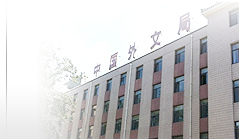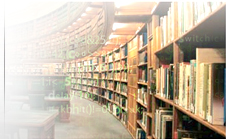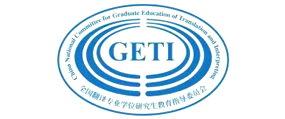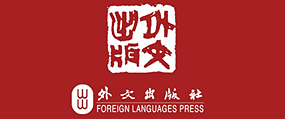译论研究
让翻译研究回归生活世界——一个翻译研究的现象学批评 / 侯向群 吕俊 5
论翻译批评空间的构建 / 刘云虹 11
翻译即诠释——论保罗·利科的翻译哲学 / 武光军 16
译史纵横
文本旅行与经典建构——寒山诗在美国翻译文学中的经典化区 / 胡安江 20
甲午战争后小说翻译中“讲述”模式的传递 / 方开瑞 26
翻译教学
翻译专业:正名过程及正名之后 / 杨晓荣 31
再谈翻译教学体系的构建 / 刘和平 35
书刊评介
个案剖析,钩沉史实——《重释“信、达、雅”——20世纪中国翻译研究》评析 / 向洪全 40
学人访谈
韦努蒂访谈录 / 郭建中 43
译业论坛
新时期我国英美文学翻译水平之我见 / 孙致礼 47
译家译事
治学严谨 务实求真——诗歌翻译家赵萝蕤逝世十周年纪念及其诗歌翻译述评 / 崔学新 52
译技探讨
翻译中的语篇功能对等研究 / 王红阳 55
对联的语用翻译 / 刘红梅 60
试论方言文化负载词的翻译——以《浮躁》中的“瓷”为例 / 李颖玉 郭继荣 袁笠菱 64
新闻报道中外国专名的翻译 / 文有仁 68
医疗卫生行业公示语英译现状调查与分析——以深圳市8所医疗机构为例 / 金其斌 72
现场口译中译员“减压策略”举隅 / 许明武 左洪芬 77
自学之友
·译家译作·
英译汉:China,s Uneasy Billionaire / 许建平 穆凤良 译注 82
翻译导读:学以致用:翻译实践与技巧的一次课堂教学检验 / 许建平 穆凤良 83
汉译英:笑话的背后(蹇庐氏) / 王武兴 译注 86
翻译导读:汉译英中 “蕴涵意义”的把握与再现 / 王武兴 88
·新人新作·
汉译英原文:若水人生 / 查一路 90
翻译习作:A Water-Like life / 黄秀敏 译 90
讲 评:汉译英的形式逻辑思维及表达方式 / 朱柏桐 91
参考译文:Life Is Like Water / 朱柏桐 译 92
词语选译
中国译协对外传播翻译委员会中译英研讨会最新讨论词汇选登93
英文摘要 95
信息广角
本刊邮购信息(67)
本刊稿约(89)
瑞易通公司招聘启事(15)
中文摘要
让翻译研究回归生活世界*——一个翻译研究的现象学批评
侯向群 南京信息工程大学 吕俊 南京师范大学
摘 要: 本文从现象学的角度指出三种对待译学研究的不同态度:自然态度、科学态度和哲学态度。而这三种态度分别对应着三个不同的世界:生活世界、科学世界和哲学世 界。结构主义语言学范式的译学研究属于科学主义的态度,而解构主义的译学研究属于哲学态度,它们均不是从生活世界的自然态度来看待翻译问题的。而翻译活动 是生活世界中一种现实性活动,对它的研究也应回归到生活世界中来,以自然的态度看待它。作者还指出,引导译学研究回归生活世界的哲学应是实践哲学,尤其是 哈贝马斯的交往行为理论对译学研究有重要的指导意义。
关键词:翻译学;批评研究;现象学;生活世界
中图分类号:H059 文献标识码:A 文章编号:1000-873X (2008)03-0005-06
论翻译批评空间的构建*
刘云虹 南京大学
摘 要: 翻译事业理性、健康的发展离不开翻译批评,但翻译批评长期处于非理性状态,对翻译实践中出现的重大问题常常以缺席者的姿态出现。从总体上看,造成这一局面 的根本原因之一在于翻译界尚未建立起积极、有效的批评空间,从而限制和束缚了翻译批评的开展。本文将立足于翻译批评的对象、主体和标准三大要素,从翻译批 评话语权的重构、批评精神的树立以及价值评价体系的建立等维度论述翻译批评空间的构建。
关键词:翻译批评;空间;话语权;批评精神;评价体系
中图分类号:H059 文献标识码:A 文章编号:1000-873X (2008)03-0011-05
翻译即诠释——论保罗·利科的翻译哲学
武光军 北京外国语大学
摘 要: 本文首先分析了当代法国最著名的哲学家之一保罗·利科的翻译即诠释的翻译哲学的实质内涵。利科认为,在翻译的本质方面,翻译即诠释;在翻译的伦理方面,要 坚持“语言友好”;在翻译研究的方向方面,要从可译与不可译的理论选择转向忠诚与背叛的实际选择。在此基础上,分析了利科对翻译哲学的突破及其对翻译研究 的启示:翻译的客体是文本,而不是语言或言语;放弃对等和完全翻译的幻想,允许多种翻译模式的存在。
关键词:翻译;诠释;翻译哲学
中图分类号:H059 文献标识码:A 文章编号:1000-873X (2008)03-0016-04
文本旅行与经典建构*——寒山诗在美国翻译文学中的经典化区
中山大学 胡安江 四川外语学院
摘 要:从故国文学史的“边缘化”到翻译文学中的“经典化”,寒山诗在文学史书写中谱写了绚丽华章,在翻译文学史中更是塑造了一个不朽的传奇。
关键词:寒山诗;翻译文学;美国;经典化
中图分类号:H059 文献标识码:A 文章编号:1000-873X (2008)03-0020-06
甲午战争后小说翻译中“讲述”模式的传递
方开瑞 广东外语外贸大学
摘 要: “讲述”是小说中常用的叙述模式。本文从文言译本(特别是林纾的译本)和白话译本(特别是章回体译本)两个方面,考察甲午战争之后小说翻译中“讲述”模式 的传递问题,认为在传递原文“讲述”环节方面,文言译本常常比白话译本更贴近原文。导致这种差别的原因,在于两种文本具有不同的规约,且面向不同的目标读 者,以发挥相应的社会作用。
关键词:讲述;文言译本;白话译本;章回体
中图分类号:H059 文献标识码:A 文章编号:1000-873X (2008)03-0026-05
翻译专业:正名过程及正名之后
杨晓荣 解放军国际关系学院
摘 要:自2006年起,翻译专业的建立成了一个引人注目的事件。本文核查了有关信息,梳理了我国高校翻译专业以及翻译学科10余年来在相关文件中“正名”的过程,说明在形势发展、学科建设、行政支持的共同作用下,翻译专业已初步形成,但还有一些问题,需要进一步研究和有针对性地作出努力,方可使翻译专业真正实至名归。
关键词:翻译专业;翻译学科;教学体制;学科名录
中图分类号:H059 文献标识码:A 文章编号:1000-873X (2008)03-0031-05
再谈翻译教学体系的构建
刘和平 北京语言大学
摘 要: 本文主要就教学翻译和翻译教学的差异能否作为翻译教学体系构建的理论基础进行思考。教学翻译作为一种教学手段和方法,在外语教学中发挥着积极作用,但不能 因此成为翻译教学的一个层次。翻译教学通常指职业翻译教学,是一种专门的技能训练。按照认知心理学理论,学员对技能的掌握通常可分为基础、中等和高等。因 此,无论是外语专业的口笔译课程,还是本科翻译专业课程,或是硕士层次的翻译课程,其区别在于技能训练的内容和学员掌握技能的程度,故划分翻译教学层次应 以此为基础。
关键词:翻译教学体系;认知特点;技能训练;程序化
中图分类号:H059 文献标识码:A 文章编号:1000-873X (2008)03-0035-05
翻译中的语篇功能对等研究
王红阳 宁波大学
摘 要: 本文从韩礼德的系统功能语言学理论中的“语篇功能”概念出发,探讨翻译研究中的“语篇功能对等”问题,并就语篇功能对等的体现情况进行论述。本文认为,语 篇功能对等是个语义概念,它由同样属于语义概念的主述位结构和衔接系统来体现,这两个语义系统又由音系或字系来体现。
关键词:系统功能语言学;语篇功能对等;主述位结构;衔接
中图分类号:H059 文献标识码:A 文章编号:1000-873X (2008)03-0055-05
对联的语用翻译
刘红梅 嘉应学院
摘 要: 本文阐述了英汉两种语言的差异性、对联语言的独特性和对联翻译的策略性,最后以语用学理论为视角,研究了对联翻译中如何保留隐含意义,处理好文化意象以求 译联的动态语用等效。笔者认为,对联,作为一种跨文化的交际活动,不仅涉及两种语言,同时也涉及两种文化。翻译中最富挑战性和难度最大的莫过于对联的翻 译,其难度在于内容和形式的辩证统一。为了使原文忠实于译文,译者必须通过两种语言与文化的对比,灵活处理文化意象,有的应尽量保持源语中的文化意象,有 的可以忽视,从而获得动态语用等效。
关键词:对联;语用学;翻译;语用等效
中图分类号:H059 文献标识码:A 文章编号:1000-873X (2008)03-0060-04
试论方言文化负载词的翻译*——以《浮躁》中的“瓷”为例
李颖玉 郭继荣 西安交通大学 袁笠菱 北京第二外国语学院
摘 要:本文从关联翻译理论出发,结合《浮躁》英译本中有关“瓷”的译例,探讨了方言文化负载词的翻译策略及需要注意的问题。分析结果表明:方言文化负载词的翻译重在准确理解和精于表达,同时译者还可以通过增补修饰成分来弥补不足,从而使译文达到最佳关联的效果。
关键词:方言;文化负载词;翻译;最佳关联
中图分类号:H059 文献标识码:A 文章编号:1000-873X (2008)03-0064-04
医疗卫生行业公示语英译现状调查与分析——以深圳市8所医疗机构为例
金其斌 深圳职业技术学院
摘 要:本文选取深圳市8所医疗机构的公示语英译作为个案,对医疗卫生行业公示语英译的现状进行了调查与分析。通过分析公示语的文本特点,指出公示语的翻译应以“看易写”实用英语翻译理论为指导。文章具体从医学英语的特点、公示语的语体色彩及文化差异等几个方面对从深圳市8家医院实地采集到的大量语料进行分析,并提出了改进意见。
关键词:医院;英文公示语;调查;深圳;个案研究
中图分类号:H059 文献标识码:A 文章编号:1000-873X (2008)03-0072-06
CONTENTS
Back to the Life-World: Phenomenological Reflections on Translation Studies / Hou Xiangqun & Lu Jun 5
Opening up the Space for Translation Criticism / Liu Yunhong 11
Translation as Hermeneutics: Ricoeur,s Philosophy of Translation / Wu Guangjun 16
The Travel of Texts and the Making of a Canon: How Han Shan,s Poems Have Gained a Classic Status in the United States / Ou Hong &Hu Anjiang 20
Reproducing the“Telling”Mode in Literary Translations after the Sino-Japanese War of 1894-1895 / Fang Kairui 26
Rethinking the Construction of a Pedagogical System for Translation Teaching / Liu Heping 35
Equivalence of Textual Function in Translation / Wang Hongyang 55
Pragmatic Approach to the Translation of Antithetic Couplets / Liu Hongmei 60
Translation of Culture-Loaded Dialect Words: With the Rendition of “cí”
in Turbulence as an Exemplar / Li Yingyu, Guo Jirong &Yuan Liling 64
Stress-reducing Strategies for Press Conference Interpretations / Xu Mingwu & Zuo Hongfen 77
E/C Translation Practice: China,s Uneasy Billionaire / Xu Jianping & Mu Fengliang 82
C/E Translation Practice: Behind the Joke (Jian Lushi) / Wang Wuxing 86
Abstracts of Major Papers in This Issue 95
Abstracts of Major Papers in This Issue
Back to the Life-World: Phenomenological Reflections on Translation Studies
by Hou Xiangqun & Lu Jun ( Nanjing University of Information Sciences and Technology;Nanjing Normal University) p.5
Abstract: Assuming a phenomenological perspective, this paper identifies three attitudes toward translation studies, namely, the natural, the scientific and the philosophical attitude, which correspond respectively to the life-world, the scientific world and the philosophical world. The scientific attitude is typically shown in structural linguistically oriented theorists of translation, while the philosophical attitude tends to inform the deconstructive paradigm of translation studies. Popular as they are, these two attitudes have shown a tendency of leading translation studies away from reality, making it impossible for the discipline to maintain a close contact with the life-world where translation activities rightly belong. To guide translation studies back to the life-world, it is imperative that we promote the natural or realistic attitude among scholars in this field. In so doing, Habermas,s theory of communicative action would provide us with much-needed theoretical inspirations.
Key words: translatology; criticism; life-world; phenomenology
Opening up the Space for Translation Criticism
by Liu Yunhong (Nanjing University) p.11
Abstract: A properly developed translation criticism holds the key to a healthy growth of translation studies as a whole. Yet for quite some time, translation criticism in China remains in a state of languor, and critics often turn a blind eye to major problems in the practice. A principal reason for this sorry situation is the lack of a space for vigorous and effective criticism. For there to be such a space, it is necessary that we grant sufficient authorization to translation critics, promote a critical spirit among general practitioners in the discipline and lay down the norms and standards for critical evaluation.
Key words: translation criticism; space; authorization; critical spirit; critical standard
Translation as Hermeneutics: Ricoeur,s Philosophy of Translation
by Wu Guangjun (Beijing Foreign Studies University) p.16
Abstract: Ricoeur,s philosophy of translation consists of three essential ideas: translation as hermeneutics; linguistic hospitality as translational ethics; and a shift from the speculative problematic of “translatability vs. untranslatability” to the practical one of “faithfulness vs. betrayal”. A breakthrough in translation thinking, Ricoeur’s philosophy holds a couple of implications for TS: that the object of translation is neither langue nor parole, but text; that the illusion of “equivalence” and of “perfect translation” ought to be renounced; and that the plurality of translation modes should be endorsed.
Key words: translation; hermeneutics; philosophy of translation
The Travel of Texts and the Making of a Canon: How Han Shan,s Poems Have Gained a Classic Status in the United States
by Ou Hong & Hu Anjiang (Sun Yat-sen University; Sichuan International Studies University) p.20
Abstract: Marginalized in its home literary system, Han Shan,s poetry has nevertheless been canonized in the American literature of translations. In Han Shan we find a case pregnant with meanings for the writing of literary history in general, and for the writing of the history of literary translations in particular.
Key words: Han Shan; poem; literature of translations; the United States; canonization
Reproducing the“Telling”Mode in Literary Translations after the Sino-Japanese War of 1894-1895
by Fang Kairui (Guangdong University of Foreign Studies) p.26
Abstract: “Telling” is a common narrative mode of fiction. This paper looks into how this mode was transferred in China,s literary translations after the Sino-Japanese War of 1894-1895, comparing its rendition in the classical-Chinese version and the vernacular-Chinese version of the same original text respectively. It finds that versions in classical Chinese are often more faithful in transferring the“telling”mode of the source texts than their vernacular-Chinese counterparts. One possible explanation for the difference is that the two types of translators concerned tended to observe different translational conventions, and they meant their texts to perform different social functions by targeting different readers.
Key words: telling; translation; classical Chinese; vernacular Chinese; the zhanghui style of fiction
Rethinking the Construction of a Pedagogical System for Translation Teaching
by Liu Heping (Beijing Language and Culture University) p.35
Abstract: This article distinguishes between “teaching foreign languages through translation” and “teaching translation for its own sake,” maintaining that since the latter is devoted to professional training on concrete translation skills only, the former ought not to be taken for one of its components. Drawing from cognitive psychology’s insight that mastery of skills could be achieved on the elementary, the intermediate and the advanced level, the author further argues that the translation or interpretation classes for foreign languages majors, for undergraduate majors in translation, and for master students of translation should be differentiated primarily on the basis of (1) the contents of skills training, and (2) the targeted level of mastery.
Key words: translation teaching system; cognitive psychology; skills training; sequencing
Equivalence of Textual Function in Translation
by Wang Hongyang (Ningbo University) p.55
Abstract: Applying a Systemic Functional Linguistic perspective to an examination of the concept of “equivalence of textual function”in translation studies, this paper discusses the patterns whereby the said equivalence is achieved, arguing that since “equivalence of textual function” is realizable only in terms of thematic structure and cohesion, it ought to be treated as a semantic concept. In conclusion, the paper calls for attaching more importance to functional than to formal equivalence.
Key words: Systemic Functional Linguistics; equivalence of textual function; thematic structure; cohesion
Pragmatic Approach to the Translation of Antithetic Couplets
by Liu Hongmei (Jia Ying University) p.60
Abstract: Taking into full consideration the differences between English and Chinese and the uniqueness of the Chinese language, this paper discusses pragmatic strategies for rendering antithetic couplets into English, paying special attention to how the covert meanings and the cultural images in the original could be kept in order to obtain a dynamic pragmatic equivalence in the translation. Specifically, it argues that 1) translating antithetic couplets, as an act of cross-cultural communication, necessarily involves two cultures as well as two languages; 2) since it is exceedingly difficult to keep a dialectical unity in both content and form between the original and the translation, couplet translation constitutes one of the most challenging and the most difficult kinds of C-E translation; 3) a flexible approach should be adopted in order to retain the cultural image conveyed in the original as much as possible and to achieve a dynamic pragmatic equivalence.
Key words: antithetic couplet; pragmatics; translation; pragmatic equivalence
Translation of Culture-Loaded Dialect Words: With the Rendition of “cí” in Turbulence as an Exemplar
by Li Yingyu, Guo Jirong &Yuan Liling (Xi,an Jiaotong University; Beijing International Studies University) p.64
Abstract: The article discusses the translation of culture-loaded dialect words from the perspective of the relevance theory. By analyzing the case of how the dialect word“cí” is rendered in Turbulence, the paper concludes that precision in understanding and subtlety in expression are especially important in the translation of culture-loaded words. Where necessary, supplementary modifiers should be employed to help achieve the optimal relevance.
Key words: dialect; culture-loaded word; translation; optimal relevance
Stress-reducing Strategies for Press Conference Interpretations
by Xu Mingwu & Zuo Hongfen (Huazhong University of Science and Technology) p.77
Abstract: Keeping an eye on the nature of translation, the present article explores the causes for the psychological pressure which interpreters tend to feel. Analyzing the data collected from some top-level official press conferences in recent years, the authors identify a number of strategies for reducing the interpreter,s stress, emphasizing the need meanwhile to take the interpreter,s competence into consideration when deciding which strategy to apply.
Key words: press conference interpretation; pressure; pressure-reducing strategies

















